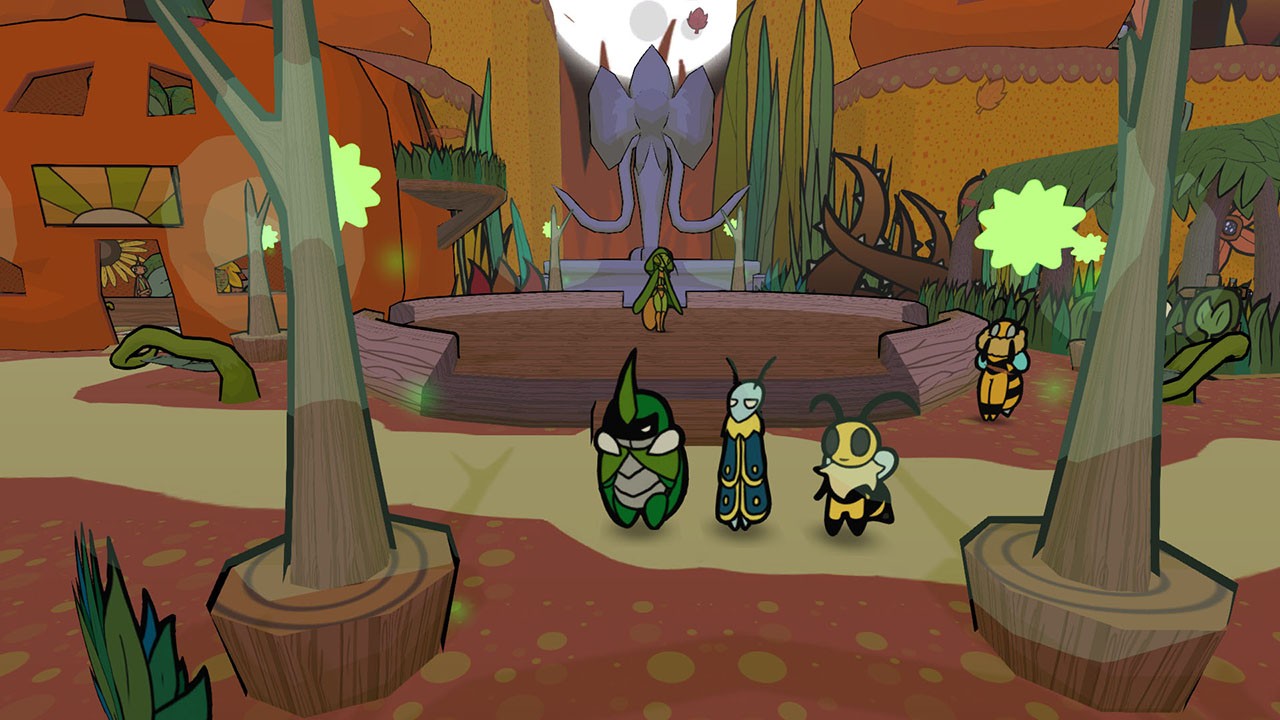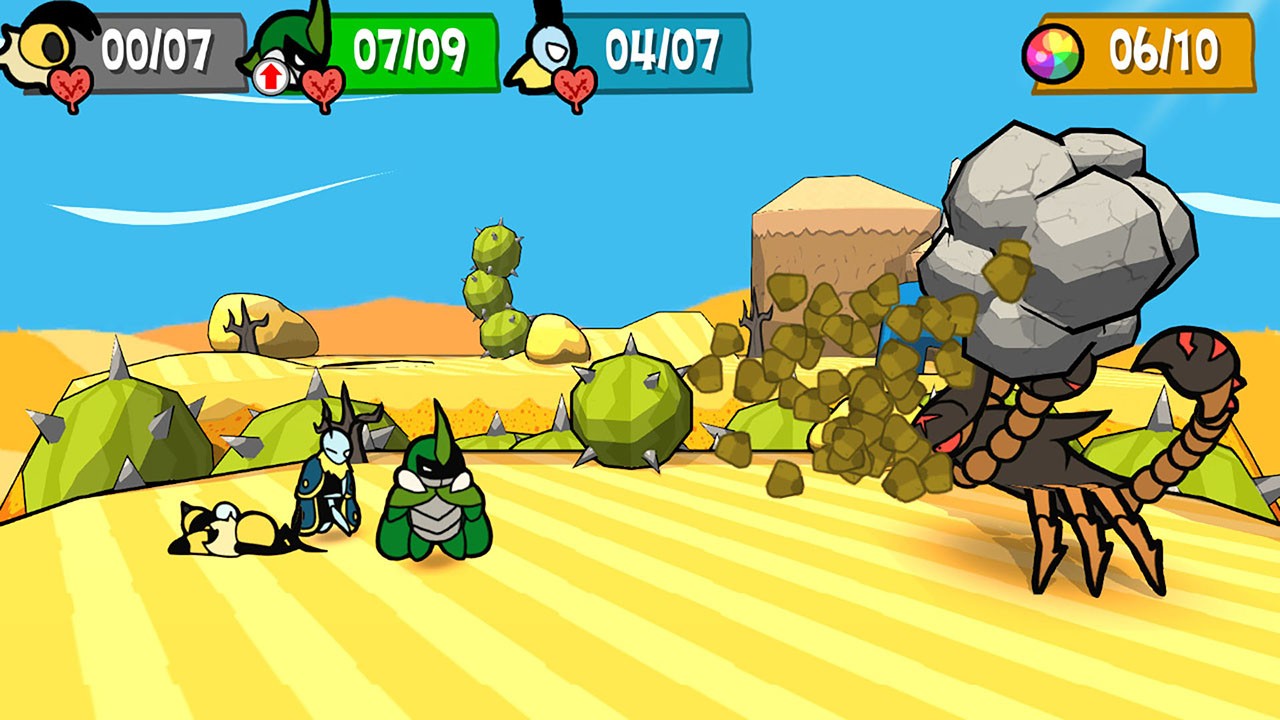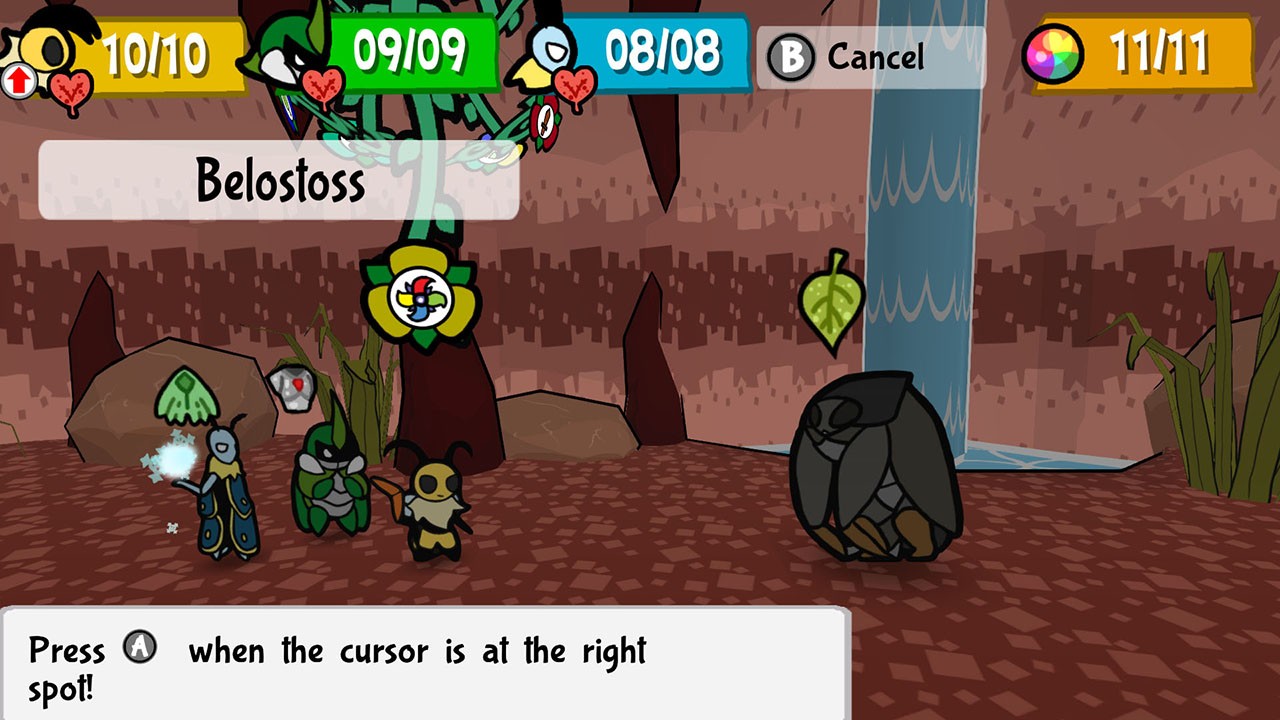 If there’s one thing that can be said about the Paper Mario series of games, it’s that they’re pretty unique. Not necessarily when it comes to the genre of role-playing, but more in their presentations. Sure, there’s been a number of games that have replicated certain elements of their style, with flat, 2D sprites that hold certain similarities to a cardboard cut-out. But none, at least none that I can think of, have created the same level of cuteness, vast third-dimensional worlds to explore and a series of interesting mechanics to bring something different to the fold. That is, until now, as Moonsprout Games and DANGEN Entertainment’s Bug Fables: The Everlasting Sapling crawls a release onto the Nintendo Switch.
If there’s one thing that can be said about the Paper Mario series of games, it’s that they’re pretty unique. Not necessarily when it comes to the genre of role-playing, but more in their presentations. Sure, there’s been a number of games that have replicated certain elements of their style, with flat, 2D sprites that hold certain similarities to a cardboard cut-out. But none, at least none that I can think of, have created the same level of cuteness, vast third-dimensional worlds to explore and a series of interesting mechanics to bring something different to the fold. That is, until now, as Moonsprout Games and DANGEN Entertainment’s Bug Fables: The Everlasting Sapling crawls a release onto the Nintendo Switch.
It’s not difficult to see where the inspirations behind this game have come from. Everything around the presentation of Bug Fables bears a striking similarity to the Paper Mario games; not just on how it feels and looks, but also in how it plays too. However, to ensure that this is title firmly able to stand on its own, eight legs, also contains a few interesting elements and additions to make this a very playable game in its own right. The game follows the exploits of Vi, Kabbu and Leif; three insects, namely a bee, a beetle and a moth (correct me if I’m wrong) who embark on a journey to obtain the legendary and mythical, Everlasting Sapling. Said to grant eternal youth, the queen of Bugaria has long searched for its fabled roots, but to no avail, until our three hapless heroes step forward to take on the challenge for themselves.
The characters and world around Bug Fables holds the same aesthetical presentation as the Paper Mario series before it. 2D sprites flip and turn through a third-dimensional, yet paper-flat world in a charming, hand-drawn, cartoon style. It’s very reminiscent of the Mario series, even matching it within its visual art-style; producing a very charming and cutesy world to explore, as well as a depth within a colourful cast of characters through a narrative of chapters that binds you within a web of intrigue. However, despite its similarities, underneath it all also lies a series of interesting elements that help create a thoroughly enjoyable journey for anyone who plays.

From the Ant Kingdom to the treacherous caves of Snakemouth Den and through the Lost Sands to Vi’s home of the Bee Kingdom, the game presents a bright and colourful setting to explore. Each region holds a host of interactions, secrets and enemies; all of which revolves around a setting of character building relationships and the overall, daring quest of the sapling. Straight from the get-go, the game does a great job of cementing the relationships between the Bugs of Bugaria and builds upon its foundations as you progress through its, utterly charming and interesting story. However, to keep things fresh within its gameplay, the game also adds a number of elements to produce a strategic layer, as well as forcing a way for the player to interact themselves with the colourful cast of heroes.
These all lie within the mechanics of the game. Guiding your trio through the series of landscapes and numerous encounters, you can swap between them at any time to produce a party leader to best take on the challenges before you. This is down to each character possessing a unique ability that can help the overall party. For instance, Vi can throw a boomerang to reach far-off items or switches, whilst Kabbu can slice foliage with his sharp horn to reveal hidden secrets or open pathways and Leif can freeze water in order to produce building blocks and solidify enemies. However, these elements and abilities also transfer over to combat, giving the player a strategic value when it comes to dealing with the game’s numerous enemies and boss encounters.
Using a turn-based mechanic, the combat here possess a few bells and whistles to give an air of cleverness to its values. Each character possesses a number of options, from basic and heavy attacks, to using items and resting. Whatever choice you make, once used, the ability then enters a cooldown period and can only be used again through a ‘resting’ recharge. However, depending on the enemy you are facing, each character holds certain strengths and weaknesses. For instance, Kabbu will struggle against airborne enemies, whereas Vi can knock them out the sky with his boomerang. It’s a mechanic that forces you to strategize as you swap between party members to take full advantage of their abilities. Each combat move you make also activates an input move to ensure full effectiveness. For example, Vi requires a timed input along a series of nodes and Kabbu tasks you with holding the down button and releasing it at the right time to produce the hardest hit. Supercharges also apply when a meter is filled, further boosting the offensive or defensive abilities of each character.

It all adds to produce a bit more depth to the combat, as well as the exploration of the lands in order to uncover secrets or gain the upper hand in combat. As with most role-players, your characters also gain XP and abilities with experience. However, new abilities need to be equipped in order to use them. As well as this, you can also find medals that can be given to any character which, again, can add abilities or buffs. In a clever mechanic though, the game’s difficulty level is also determined through equipping a medal; one that strengthens enemy types, but offers more XP as a reward. In fact, certain elements can’t be acquired unless this medal is in use; adding a replay value to overall experience, as well as an incentive to tackle its hardest mode.
As well as the main quest, the game also holds a series of sub-quests; each one tying with a backstory around each of the characters. This in turn offers some cool rewards that can be equipped to specific characters, as well as some interesting boss fights to overcome. These can change the layout of the gameplay dramatically, as they introduce a number of fun and interesting mini-games from a dungeon crawler to an all out, collectable card game. It really adds to the overall charm of the game and keeps things ticking along at an interesting pace. Gained loot can be used for cooking up extra items and potions and berries can be accrued to provide an in-game source of currency with which to spend. Whatever the element, it all comes surrounded in an undeniable charm that easily matches any first-party Nintendo offering.
Overall, Bug Fables: The Everlasting Sapling may just be the biggest surprise of the year to come to the Nintendo Switch. Its Paper Mario styling will delight fans of the series and its accessible and interesting levels of play make it an ideal entry point for younger audiences, as well as a lovable and enjoyable journey for more experienced players. Its overall presentation is gorgeous to look at and its soundtrack is exemplary. The real charm though, lies in its overall narrative and focus on character developments; creating a trio of protagonists that grows on you with real investment. Couple this with a fun and strategic layer of turn-based combat, mini-gamed side quests, a vibrant world to explore and a whole host of clever mechanics and your left with a game that will simply leave you buzzing.
REVIEW CODE: A complimentary Nintendo Switch code was provided to Bonus Stage for this review. Please send all review code enquiries to press@4gn.co.uk.
Subscribe to our mailing list
Get the latest game reviews, news, features, and more straight to your inbox
Thank you for subscribing to Bonus Stage.
Something went wrong.
Bug Fables: The Everlasting Sapling Review
-
Gameplay - 9/10
9/10
-
Graphics - 9/10
9/10
-
Sound - 9/10
9/10
-
Replay Value - 9/10
9/10
Overall
Summary
Bug Fables: The Everlasting Sapling holds a striking resemblance to the Paper Mario series, but holds enough to make it stand firmly on its own eight feet.





